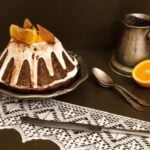Fondant is a versatile and popular choice when it comes to cake decorations. Unlike other materials used for decorating cakes, fondant offers a smooth and polished finish that can turn any ordinary cake into a work of art. In this article, we will explore the world of fondant and provide you with step-by-step instructions on how to make your own fondant decorations.
But first, what exactly is fondant? Fondant is a type of icing that is made from sugar, water, and other ingredients to create a pliable dough-like mixture.
It provides a firm yet flexible texture that can be easily shaped and molded into various designs, making it the go-to choice for professional cake decorators. Compared to buttercream or royal icing, fondant allows for more intricate details and can easily be rolled out to cover whole cakes or cut into shapes.
What sets fondant apart from other cake decorating materials is its versatility. Fondant can be colored using food coloring or natural ingredients, allowing you to create vibrant designs or stick to elegant pastel hues for a more subtle effect. Additionally, it can also be flavored in various ways to enhance both the look and taste of your creations. With fondant, the creative possibilities are endless.
So whether you are an experienced baker looking to expand your skills or a novice decorator eager to try something new, learning how to make fondant decorations is definitely worth the effort. The following sections will guide you through each step of the process, from preparing the perfect fondant mixture to troubleshooting common issues. Get ready to impress with stunning cake decorations made entirely by you.
Tools and Materials Required for Making Fondant Decorations
To create stunning fondant decorations, you will need a variety of tools and materials. Here is a comprehensive list of what you will need to get started:
- Fondant: This is the primary ingredient for making fondant decorations. You can either make your own fondant or purchase ready-to-use fondant from brands like Satin Ice or Wilton. It is recommended to have different colors of fondant on hand to create vibrant designs.
- Rolling Pin: A non-stick rolling pin is essential for rolling out the fondant into a smooth, even layer. Look for a rolling pin with guide rings to ensure that your fondant is rolled to the desired thickness.
- Fondant Smoother: A fondant smoother helps in achieving a professional finish by smoothing out any wrinkles or imperfections on the surface of the fondant.
- Cutting Tools: Invest in a set of sharp, food-safe cutting tools specifically designed for working with fondant. These include scalloped edge cutters, flower petal cutters, and shape cutters.
- Modeling Tools: Modeling tools are used for shaping and adding intricate details to your fondant decorations. They come in various shapes and sizes such as ball tools, veining tools, and embossing tools.
- Edible Glue: Edible glue acts as an adhesive to attach different pieces of fondant together or secure decorations onto cakes. You can use water as a substitute for edible glue if needed.
- Dusting Pouches/Cornstarch/Confectioners’ Sugar: These are used to prevent the fondant from sticking to surfaces while working with it.
- Paint Brushes: Small paint brushes are useful when applying color or adding finer details using food coloring gels or edible dusts/paints.
Additionally, having parchment paper, a silicone baking mat, storage containers for leftover fondants, and a turntable for easier decorating are also recommended.
By ensuring that you have all the necessary tools and materials, you will be well-equipped to create beautiful fondant decorations for your cakes. Investing in high-quality products can make the process easier and help you achieve professional results.
Preparing the Fondant Mixture
Once you have gathered all the necessary tools and materials, it’s time to prepare the fondant mixture. Making a perfect fondant mixture is crucial to achieving the desired consistency for your cake decorations. Follow these step-by-step instructions for a smooth and workable fondant:
- Start by sifting the powdered sugar into a large mixing bowl to remove any lumps. This will ensure a smooth texture.
- In a separate microwave-safe bowl, microwave the marshmallows in 30-second intervals until they are completely melted. Stir well after each interval to avoid burning.
- Pour the melted marshmallows into the powdered sugar and mix with a spatula until it forms a sticky dough.
- Dust your work surface with powdered sugar and knead the fondant mixture with your hands until it becomes smooth and pliable. Add more powdered sugar if it feels too sticky or cornstarch if it feels too dry.
- Once you have achieved the desired consistency, wrap the fondant tightly in plastic wrap and let it rest at room temperature for at least 1 hour before using. This allows the fondant to firm up slightly, making it easier to work with.
It’s essential to note that working quickly is key when preparing fondant as it can dry out easily. If you need to store unused fondant, make sure to wrap it tightly in plastic wrap or seal it in an airtight container to prevent drying.
Experimenting with different ratios of marshmallows, powdered sugar, and other ingredients like shortening or glycerin can help you customize your fondant mixture based on climate conditions or personal preferences for texture and taste.
Remember, practice makes perfect. Don’t be discouraged if your first attempts at making fondant are not flawless – keep trying and refining your technique until you achieve that perfect consistency every time.
Coloring and Flavoring Fondant
Coloring and flavoring fondant is an important step in creating visually appealing and delicious cake decorations. Whether you want to add vibrant colors or unique flavors to your fondant, there are various methods and ingredients you can use to achieve the desired results.
When it comes to coloring fondant, one of the most popular options is using food coloring. Gel or paste food coloring is recommended over liquid food coloring as it does not add extra moisture to the fondant. Start by adding a small amount of food coloring to the fondant and knead it until the color is evenly distributed. Add more coloring if needed until you achieve the desired shade.
If you prefer natural ingredients for coloring, there are several options available. For example, beet juice can be used to create a pink or red shade, while matcha powder can give a lovely green color. By experimenting with different natural ingredients such as cocoa powder, turmeric, or spirulina powder, you can create a wide range of colors while keeping your decorations free from synthetic dyes.
Flavoring fondant can elevate the taste of your cake decorations. The most common method is adding extracts or essences such as vanilla, almond, lemon, or peppermint. It’s important to note that when adding extracts, use them sparingly to avoid altering the texture of the fondant or making it too sticky. Begin with a few drops and gradually increase based on your taste preferences.
Another way to add flavor is by incorporating flavored oils or fruit concentrates into your fondant mixture. This allows for more intense flavors and opens up possibilities for unique combinations like chocolate orange or raspberry cream. Again, start with small amounts and adjust according to your preference.
| Coloring Fondant | Flavoring Fondant |
|---|---|
| – Gel or paste food coloring | – Extracts or essences (e.g., vanilla, almond) |
| – Natural ingredients (beet juice, matcha powder) | – Flavored oils or fruit concentrates |
Shaping Fondant Decorations
Creating stunning cake decorations with fondant requires skill and precision in shaping and molding the fondant into different designs. Whether you’re a beginner or an experienced decorator, there are various techniques you can utilize to achieve beautiful and intricate details on your fondant decorations.
Rolling Fondant
To begin shaping your fondant decorations, start by rolling out the fondant evenly on a clean and lightly dusted surface using a rolling pin. This technique is commonly used for covering cakes or creating flat shapes. Maintain an even thickness throughout by applying gentle pressure while rolling.
Cut-Out Designs
Cut-out designs involve using specialized tools such as cookie cutters or fondant cutters to create specific shapes from rolled out fondant. This method is great for creating uniform and symmetrical decorations like hearts, stars, or basic designs. Lightly grease the cutters before use to ensure easy release of the fondant shapes.
Hand Sculpting
For more detailed and intricate decorations, hand sculpting allows you to mold the fondant into specific shapes and figures using your fingers or modeling tools. This technique is ideal for creating figures, animals, or custom designs that require three-dimensional elements. Practice good hygiene by washing your hands thoroughly before working with the fondant.
Embossing and Texturing
Embossing involves adding texture or patterns to the surface of your fondant decorations. This can be achieved by using textured mats, impression tools, or even household items like lace or fabric to press onto the fondant gently. Experiment with different textures and patterns to create unique and visually appealing decorations.
Remember to keep any unused fondant covered with plastic wrap or in an airtight container to prevent it from drying out during the shaping process. If needed, lightly brush a small amount of water or edible glue onto the fondant to help adhere different pieces together.
By mastering these shaping techniques, you’ll be able to create a wide range of fondant decorations with intricate details and smooth finishes. Don’t be afraid to experiment and let your creativity shine through as you explore the world of fondant cake decorations.
Creating Basic Fondant Decorations
If you’re new to working with fondant, creating basic decorations is a great place to start. Simple designs like flowers, bows, or shapes like hearts and stars can add a touch of elegance and creativity to any cake. In this section, we will provide detailed step-by-step instructions for beginners to easily follow along.
To create basic fondant decorations, you will need a few essential tools and materials. Some of these include a rolling pin, fondant smoother, pastry brushes, flower cutters or molds, and edible glue. It is highly recommended to use high-quality brands such as Wilton or Satin Ice for the best results.
- Step 1: Start by kneading the fondant until it becomes soft and pliable. This helps improve its elasticity and make it easier to work with.
- Step 2: Dust your working surface with powdered sugar or cornstarch to prevent the fondant from sticking. Roll out the fondant using a rolling pin until it is about 1/8 inch thick.
- Step 3: Use cookie cutters or specially designed molds to create shapes such as flowers or hearts. Gently press them into the rolled-out fondant and carefully remove the excess around the edges.
- Step 4: To create three-dimensional shapes like bows, roll out small pieces of fondant into long strips. Fold them over in equal lengths to create loops and secure them together using edible glue.
- Step 5: For intricate details on your decorations, use tools like toothpicks or veining tools to add texture or patterns to petals or leaves.
- Step 6: Allow your fondant decorations to dry completely before placing them on the cake. This typically takes anywhere from a few hours up to overnight depending on the size and thickness of your decorations.
By following these steps, even beginners in cake decorating can quickly master creating basic fondant decorations. Keep practicing and experimenting with different shapes, colors, and designs to unlock your creativity and enhance the beauty of your cakes.
Advanced Fondant Decoration Techniques
Introduction to Advanced Fondant Decoration Techniques
Once you have mastered the basics of fondant decoration, it’s time to take your skills to the next level with advanced techniques. Advanced fondant decorations can elevate your cakes to a whole new level, allowing you to create intricate figures, animals, or themed designs that will leave everyone in awe. In this section, we will explore some of these advanced techniques and provide you with tips and tricks for achieving professional-quality results.
Working with Modeling Chocolate
One advanced technique that can take your fondant decorations to new heights is incorporating modeling chocolate into your designs. Modeling chocolate is a versatile medium that allows for greater flexibility and sculpting capabilities compared to fondant alone. It has a smooth texture and can be easily molded into various shapes.
To work with modeling chocolate, simply knead it until it becomes pliable and then shape it into the desired form. You can combine modeling chocolate with fondant to add even more depth and dimension to your creations. The combination of these two mediums opens up endless possibilities for creating lifelike figurines or realistic textures on your cake.
Airbrushing Techniques
Airbrushing is another advanced technique that can add depth, shading, and intricate designs to fondant decorations. With an airbrush gun and food-safe colors, you can achieve gradients, ombre effects, or intricate patterns that are difficult to replicate by hand.
To airbrush fondant decorations, start by selecting the desired colors and thinning them down using water or alcohol as indicated by the manufacturer’s instructions. Practice on a piece of scrap fondant first to get a feel for the pressure and distance needed. Once confident, hold the airbrush gun at a slight angle and begin spraying in gentle sweeping motions over your decoration.
By layering different colors or gradually building up the intensity of one color, you can create stunning effects that will make your fondant decorations truly stand out. Remember to clean your airbrush gun thoroughly after each use to avoid any clogging or mixing of colors.
These are just a few examples of the advanced techniques you can explore when working with fondant. As always, don’t be afraid to experiment and push your creative boundaries to achieve unique and intricate designs. With practice and patience, you will soon master these techniques and be able to create show-stopping fondant decorations that will amaze everyone who sees them.
Adding Fondant Decorations to Cakes
Once you have created your beautiful fondant decorations, the next step is to attach them to your cake. It’s important to ensure that your decorations are securely placed and that they enhance the overall aesthetic of your cake. Here are some best practices for adding fondant decorations to cakes:
- Prepare Your Cake Surface: Before attaching any fondant decorations, make sure that the surface of your cake is smooth and free from any crumbs or imperfections. You can achieve a smooth surface by applying a thin layer of buttercream frosting or ganache as a base.
- Use Edible Glue: To attach the fondant decorations onto the cake, it’s recommended to use edible glue instead of water. Edible glue provides more adhesion and helps to prevent the decorations from sliding or falling off. You can easily make edible glue by mixing some tylose powder with clear drinking alcohol or water until it reaches a syrup-like consistency.
- Apply Glue Strategically: Apply small dots or a thin layer of edible glue onto the back of each fondant decoration using a small brush or toothpick. Be mindful not to use too much glue as it may cause the fondant to become sticky and lose its shape.
- Handle Decorations with Care: When handling the fondant decorations, be gentle and avoid applying too much pressure as it may distort the shape or detail. If you need to adjust their position, do so carefully without touching them directly with your fingers.
- Add Additional Support if Required: For larger or heavier fondant decorations, consider using additional support such as toothpicks, wooden skewers, or dowels inserted into the cake before placing the decoration on top. This will help ensure stability and prevent any sagging or collapsing.
- Finishing Touches: Once all your fondant decorations are securely attached, take a step back and assess the overall look of your cake. Make any necessary adjustments or additions to achieve a professional finish. You can also enhance the appearance by adding some edible glitter, luster dust, or painted accents.
By following these steps, you can confidently add your fondant decorations to your cake and create a stunning centerpiece for any occasion. Remember to handle the decorations with care and take your time during this process to ensure that every detail is perfect. Happy decorating.
Troubleshooting Common Fondant Decoration Issues
Cracking Fondant
One common issue that decorators may encounter when working with fondant is cracking. Cracks can occur when the fondant becomes too dry or when it is stretched too thin. To prevent cracking, it is important to properly knead and prepare the fondant before using it for decorations. Make sure to knead the fondant until it is smooth and pliable, as this will help prevent cracks from forming.
If cracks do appear on the fondant, there are a few methods you can try to fix them. One option is to gently rub vegetable shortening onto the cracked area using your fingertips. The shortening will help soften the fondant and fill in any gaps caused by the cracks. Another method is to use a small paintbrush dipped in water or a clear alcohol, like vodka, to lightly moisten the cracked area and then smooth it out with your fingertips.
Drying Out Fondant
Another issue that decorators may face is dry or stiff fondant. This can make working with the fondant difficult and result in decorations that are less flexible and have a rough texture. To prevent fondant from drying out, it is important to store it properly. Wrap unused portions of fondant tightly in plastic wrap or place them in an airtight container to keep them from drying out.
If you find that your fondant has already dried out, there are ways to revive it. One method is to add a small amount of vegetable shortening or glycerin to the fondant and knead it until it becomes more pliable again. Alternatively, you can try microwaving small portions of dried-out fondant for about 10 seconds at a time until it softens slightly.
Sticking Fondant
Sticking can be another frustrating issue when working with fondant decorations. Fondant may stick to the work surface, rolling pin, or tools, making it difficult to handle and shape. To prevent sticking, it is important to properly dust your work surface and tools with cornstarch or powdered sugar before working with the fondant. This will create a barrier between the fondant and the surface, reducing the chances of sticking.
If the fondant does stick to your tools or work surface, you can carefully lift it using a spatula or a thin knife. Another trick is to lightly dust your hands with cornstarch or powdered sugar before handling the fondant. This will help prevent the fondant from sticking to your hands while shaping and molding it.
By being aware of these common issues and knowing how to troubleshoot them, decorators can ensure that their fondant decorations turn out beautifully and without any hiccups along the way. With some patience and practice, even beginners can overcome these challenges and create stunning fondant creations for their cakes.
Conclusion
In conclusion, making cake fondant decorations can be a fun and rewarding experience. With the right tools and materials, you can create stunning designs that will impress your friends and family. By following the step-by-step instructions provided in this article, you can easily shape, color, and flavor fondant to suit your taste and style.
Whether you’re a beginner or an experienced decorator, there are endless possibilities for creating beautiful fondant decorations. Starting with basic designs such as flowers or bows allows you to build your skills and gain confidence. Once you feel comfortable, you can move on to more advanced techniques like creating figures or themed decorations.
When adding fondant decorations to cakes, it is important to follow best practices for secure placement and a professional finish. Taking the time to troubleshoot common issues like cracking or sticking will ensure that your creations turn out picture-perfect.
Lastly, don’t forget to showcase your fondant decorations. By sharing photos of your creations on social media or online communities, you can inspire others and receive feedback from fellow decorators. Remember, the key to successful fondant decoration is practice and creativity. So have fun experimenting with different designs and techniques, and let your imagination run wild.

Welcome to my blog about home and family. This blog is a place where I will share my thoughts, ideas, and experiences related to these important topics. I am a stay-at-home mom with two young children. I hope you enjoy reading it! and may find some helpful tips and ideas that will make your home and family life even better!





